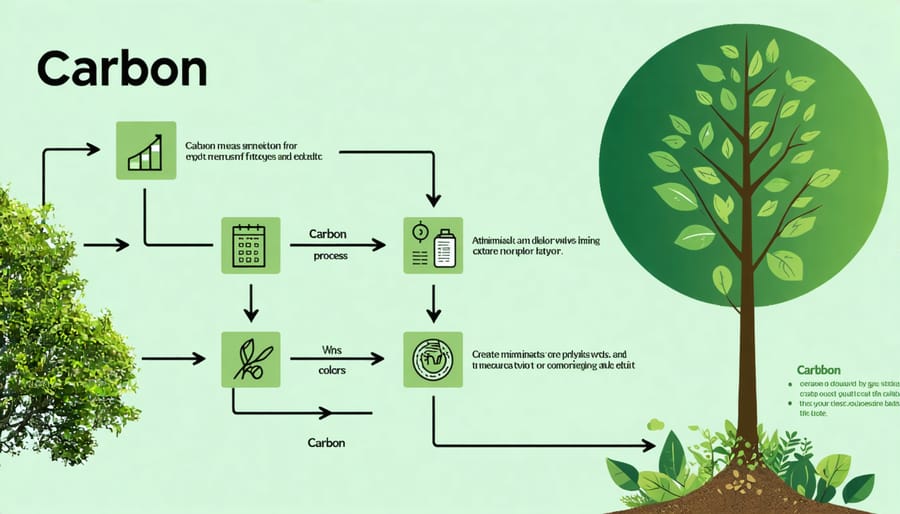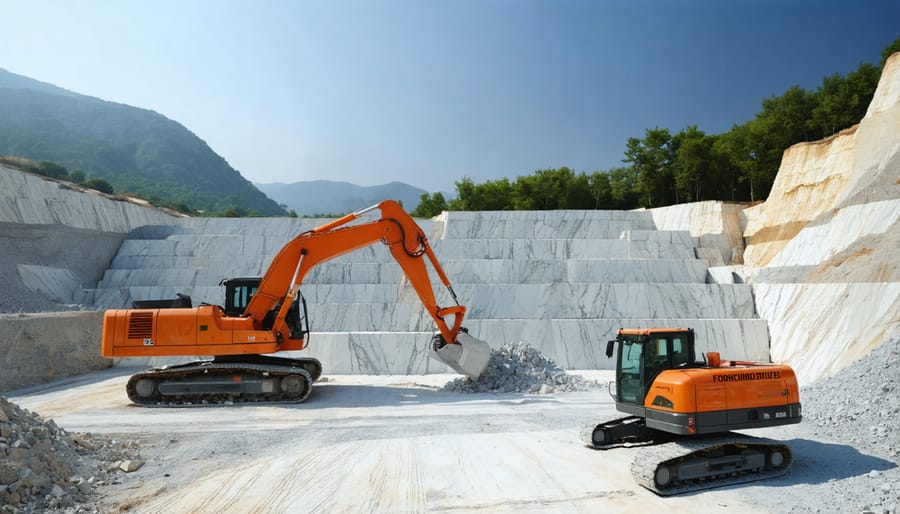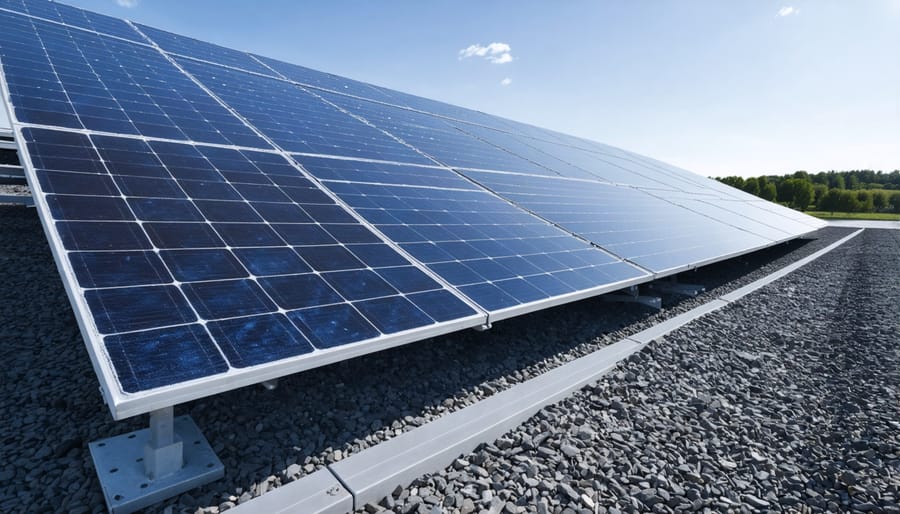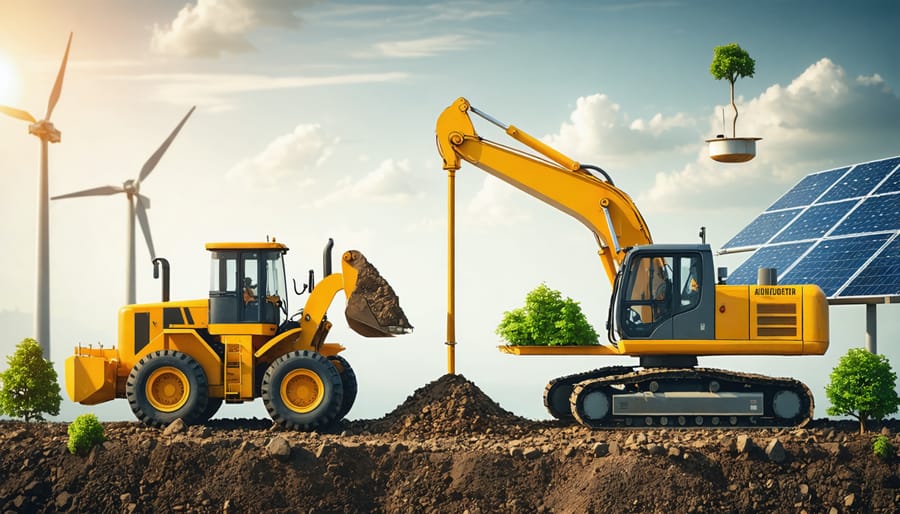Achieving a zero carbon footprint represents one of the most crucial environmental goals in modern industry and personal sustainability efforts. As global awareness of climate change intensifies, understanding how to eliminate our carbon emissions has become essential for businesses, organizations, and individuals alike. The concept extends beyond merely reducing emissions – it encompasses a complete neutralization of carbon output through careful planning, innovative technologies, and sustainable practices, including the use of ethically sourced natural stone in construction and design.
A true zero carbon footprint occurs when the net amount of carbon dioxide and other greenhouse gases released into the atmosphere equals zero, achieved through a combination of emission reduction strategies and carbon offset programs. This balance represents a critical benchmark in the fight against climate change, offering a clear, measurable target for environmental responsibility and sustainable development. Understanding this concept empowers organizations and individuals to make informed decisions about their environmental impact and take meaningful steps toward a more sustainable future.
What Zero Carbon Footprint Really Means
Carbon Footprint Basics
A carbon footprint represents the total greenhouse gas emissions produced directly or indirectly by an individual, organization, or product. In natural stone production, this encompasses emissions from quarrying operations, processing, transportation, and installation activities. The primary components include carbon dioxide (CO2), methane, and nitrous oxide released during various stages of stone extraction and fabrication.
The main contributors to stone production’s carbon footprint include energy consumption from heavy machinery during quarrying, electricity usage in processing facilities, fuel consumption in transportation, and the power required for cutting and finishing equipment. Additional factors involve the embodied carbon in supporting materials and tools used throughout the production process.
Understanding these components is crucial for measuring and ultimately reducing carbon emissions. Modern stone production facilities often track their carbon footprint through detailed energy audits and emissions assessments, considering both direct emissions from on-site activities and indirect emissions from purchased electricity and outsourced operations. This comprehensive approach helps identify areas where carbon reduction strategies can be most effectively implemented.

The Path to Zero
Achieving true carbon neutrality requires a comprehensive, multi-step approach that goes beyond simple offsetting. The journey begins with measuring current emissions across all operations, from direct energy use to supply chain activities. Organizations must then implement reduction strategies, starting with the most significant sources of emissions.
Key steps include transitioning to renewable energy sources, optimizing transportation and logistics, improving energy efficiency in buildings and operations, and redesigning products and processes for minimal carbon impact. Advanced technologies like heat recovery systems, electric vehicles, and smart building management play crucial roles in this transformation.
For remaining unavoidable emissions, high-quality carbon offset projects provide a bridge to neutrality. These might include forest conservation, renewable energy development, or methane capture initiatives. However, the focus should always remain on reduction first, with offsetting as a complementary measure.
Regular monitoring and verification ensure progress stays on track, while transparency in reporting builds credibility with stakeholders. Success requires commitment at all organizational levels and often involves collaboration with suppliers, customers, and industry partners to achieve broader systemic change.
Carbon Sources in Natural Stone Production

Extraction Process Emissions
Quarrying operations contribute significantly to a stone product’s overall carbon footprint through various extraction processes. The primary sources of emissions include diesel-powered machinery, explosives used for extraction, and the energy consumed by cutting and processing equipment. Modern quarries are increasingly focusing on reducing carbon emissions through innovative technologies and improved operational efficiency.
The extraction process typically involves several emission-generating activities. Heavy machinery such as excavators, loaders, and trucks produce direct CO2 emissions through fuel consumption. Drilling and blasting operations, while necessary for accessing stone deposits, release both CO2 and other greenhouse gases. Additionally, the power required for wire saws and other cutting equipment contributes to indirect emissions, particularly when sourced from non-renewable energy.
Progressive quarry operators are implementing various strategies to minimize these emissions. These include investing in electric or hybrid machinery, optimizing extraction patterns to reduce fuel consumption, and utilizing renewable energy sources for processing equipment. Some operations have successfully reduced their extraction-related emissions by up to 40% through these measures.
Water management systems and dust suppression methods also play crucial roles in sustainable extraction practices, as they affect both environmental impact and energy consumption. By implementing closed-loop water systems and modern dust collection technologies, quarries can significantly reduce their resource usage and associated carbon emissions.
Processing and Transport Impact
The processing and transport of natural stone materials significantly impacts a project’s carbon footprint. Cutting and finishing operations typically require substantial energy, with modern CNC machines and water-jet cutters consuming considerable electricity. However, many fabricators are now transitioning to renewable energy sources and implementing water recycling systems to minimize their environmental impact.
Transportation represents another crucial factor in the carbon equation. The distance between quarries, processing facilities, and construction sites directly affects emissions through fuel consumption. Local sourcing can dramatically reduce these transportation-related emissions, with some projects achieving up to 70% reduction in transport-related carbon footprint by choosing nearby quarries.
To minimize processing impact, manufacturers are adopting innovative technologies like diamond wire saws, which reduce energy consumption by up to 30% compared to traditional methods. Some facilities have installed solar panels and wind turbines to power their operations, while others use electric vehicles for local deliveries.
Companies are also optimizing shipping routes and implementing full-load policies to maximize transportation efficiency. The use of rail and water transport where possible further reduces emissions compared to traditional road transportation. These combined efforts in processing and transport optimization play a vital role in achieving a lower overall carbon footprint in natural stone projects.
Strategies for Achieving Zero Carbon
Modern Extraction Technologies
Modern stone extraction technologies have revolutionized the quarrying industry’s approach to reducing carbon emissions. Advanced wire sawing systems now utilize electric power instead of diesel engines, significantly decreasing on-site emissions. These systems are complemented by precision GPS-guided cutting equipment that maximizes material yield while minimizing waste and energy consumption.
Water jet cutting technology has emerged as a particularly eco-friendly extraction method, using high-pressure water mixed with abrasive materials to cut stone with remarkable precision. This process requires less energy than traditional methods and produces minimal dust, reducing the need for suppression systems that would otherwise consume additional resources.
Computer-aided quarrying systems now optimize cutting patterns and block removal sequences, ensuring maximum efficiency in both energy use and material recovery. These systems work in conjunction with electric-powered machinery, including hybrid excavators and automated guided vehicles (AGVs) for block transportation within quarries.
Remote monitoring and automation have also played crucial roles in reducing unnecessary equipment operation. Sensors track machine performance and fuel consumption in real-time, allowing operators to maintain optimal efficiency levels. Additionally, regenerative braking systems on modern quarry vehicles capture and store energy from downhill transportation, which can be reused for uphill journeys.
These technological advances, combined with renewable energy sources powering quarry operations, demonstrate the industry’s commitment to achieving zero carbon extraction processes.
Renewable Energy Integration
The integration of renewable energy sources plays a crucial role in achieving a zero carbon footprint in natural stone processing facilities. Leading manufacturers are increasingly adopting solar, wind, and hydroelectric power to run their operations. These clean energy solutions not only reduce environmental impact but also provide long-term cost benefits and align with sustainable building practices.
Solar panel installations on facility rooftops have become particularly popular, with many quarries and processing plants generating a significant portion of their electricity needs on-site. Advanced energy storage systems allow operations to continue even during non-peak production hours, ensuring consistent power supply while maintaining zero emissions.
Wind energy is another viable option for facilities located in suitable geographic locations, while some manufacturers utilize small-scale hydroelectric power from nearby water sources. Many facilities combine multiple renewable sources to create a reliable energy matrix that meets their operational demands.
The transition to renewable energy often requires significant initial investment, but government incentives and reduced operational costs typically result in positive returns within 5-7 years. Companies that have made this switch report up to 60% reduction in energy costs while completely eliminating carbon emissions from their power consumption.

Carbon Offset Programs
Carbon offset programs play a crucial role in achieving a zero carbon footprint when direct emission reductions aren’t fully possible. These programs allow individuals and organizations to compensate for their unavoidable carbon emissions by investing in projects that reduce or remove greenhouse gases elsewhere.
Common offset strategies include reforestation initiatives, renewable energy projects, and methane capture programs. For example, a natural stone manufacturer might offset their processing emissions by funding wind farm development or supporting large-scale tree planting efforts. These programs typically work through a credit system, where one carbon credit equals one metric ton of CO2 emissions reduced or removed from the atmosphere.
When selecting offset programs, it’s essential to choose verified initiatives that meet international standards and provide transparent tracking of impact. Look for certifications from recognized bodies such as the Gold Standard or Verified Carbon Standard (VCS) to ensure the legitimacy of offset claims.
However, it’s important to note that carbon offsets should be viewed as part of a comprehensive carbon reduction strategy, not a standalone solution. The most effective approach combines direct emission reductions through operational improvements with strategic offset investments to address remaining unavoidable emissions. This balanced approach helps organizations progress toward genuine carbon neutrality while supporting global climate action initiatives.
The journey toward zero carbon footprint in natural stone production represents a crucial evolution in the construction materials industry. As we’ve explored throughout this article, achieving carbon neutrality in stone processing involves a comprehensive approach combining innovative technologies, renewable energy adoption, and strategic operational changes. Sustainable stone production is no longer just an aspirational goal but a practical necessity for the industry’s future.
Looking ahead, the outlook for zero carbon stone production is promising. Technological advancements continue to improve efficiency in extraction and processing methods, while the increasing availability of renewable energy sources makes carbon-neutral operations more achievable. Industry leaders are investing in research and development to further reduce environmental impact, from water recycling systems to electric-powered machinery.
The growing demand for sustainable building materials from environmentally conscious consumers and stringent regulatory requirements will likely accelerate the transition to carbon-neutral practices. Many quarries and processing facilities are already implementing comprehensive sustainability programs, setting ambitious targets for achieving zero carbon operations by 2030 or sooner.
However, challenges remain. The initial investment required for upgrading equipment and implementing new technologies can be substantial. Additionally, some regions face limitations in accessing renewable energy sources or sustainable transportation options. Despite these obstacles, the industry’s commitment to environmental stewardship remains strong.
Success in achieving zero carbon footprint will require continued collaboration between manufacturers, suppliers, architects, and end-users. As more companies demonstrate the feasibility of carbon-neutral stone production, best practices will become more standardized and accessible across the industry. This transformation not only benefits the environment but also creates new opportunities for innovation, cost savings, and market differentiation.
The path to zero carbon stone production is clear, and the industry is well-positioned to meet this challenge head-on, ensuring that natural stone remains a sustainable choice for future generations of builders and designers.










